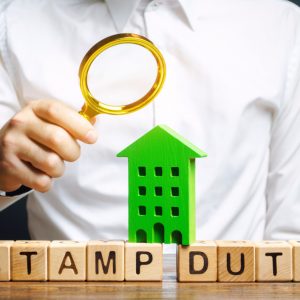
Compared to Q3, figures from HMRC show that residential property transactions rose by four per cent from 290,500 to 302,900 in the final three months of last year.
On an annual basis, residential transactions were eight per cent higher than in 2021 and receipts were up by four per cent. This period also correlates with the three months last year that there was no stamp duty holiday in place.
Fewer transactions liable to pay tax
HMRC said the level of transactions showed a return to pre-pandemic levels following a drop in activity due to social distancing measures and, later, an increase in activity owing to the stamp duty holiday.
Some 91 per cent of all stamp duty transactions were for residential properties in Q4, which was unchanged from Q3.
The number of residential transactions which were liable to pay stamp duty fell by 18 per cent between Q3 and Q4 from 205,000 to 168,700. Compared to Q4 in 2021, this was a drop of eight per cent.
The number of residential transactions which were not subjected to pay stamp duty rose by 57 per cent quarter-on-quarter to 134,200 and was up by 38 per cent compared to the year before.
Overall, the proportion of residential transactions which were liable fell from 65 per cent in Q4 2021 to 56 per cent in Q4 2022.
HMRC said the changes in the number and share of chargeable transactions was down to the increase in the nil rate threshold to £250,000, as announced in the mini Budget. The relief given to first-time buyers was also increased from £500,000 to £625,000.
Some 22 per cent of liable residential transactions were valued at under £250,000 in Q4. Annually, this was a 46 per cent decline from 67,000 properties to 36,800.
The number of liable transactions valued between £250,000 and £500,000 rose by three per cent to 82,100 when compared to 2021, while the number of liable transactions over £500,000 rose by 39 per cent to 49,700.
Helen Morrissey, head of retirement analysis at Hargreaves Lansdown, said: “Stamp duty is likely to look decidedly more downtrodden in the coming months. This data covers transactions likely agreed in the late summer/early Autumn, so they won’t demonstrate the full impact of the mini Budget which sent many would-be buyers running for the hills as lenders pulled deals from the market at the very last minute.
“As a result, receipts for stamp duty for residential properties were still higher than the same period the previous year as were the number of transactions. It depicts a very different market to the one we are facing now just a few short months later.”
Higher rates for additional homes
There were 52,600 transactions which were liable to pay a higher rate for additional dwellings (HRAD) in Q4, with the three per cent surcharge generating £365m. The intake was 31 per cent down on Q3 and 18 per cent lower than the year before.
The number of transactions liable was down by 17 per cent annually, and 16 per cent on a quarterly basis.
Higher rate transactions accounted for 35 per cent of all transactions in Q4, down from Q3’s 40 per cent share.
Between Q1 2018 and Q2 2020, HRAD transactions consistently accounted for around a third of all liable transactions. This rose to a share of more than 60 per cent after the stamp duty holiday was introduced.
Since the end of the stamp duty holiday, this has fallen and returned to a share of 31 per cent in Q4 2022.
Some 56 per cent of HRAD transactions were under the value of £250,000 in Q4, an annual decline of 22 per cent to 29,500.
Higher rate receipts as a whole fell by 12 per cent annually to £1.01bn and decreased by 23 per cent since Q3.
The HRAD surcharge can be refunded to those who sell their previous main residence within 36 months, and in Q4 6,900 refunds were made at a total value of £126m.
Non-residents surcharge
The two per cent surcharge imposed on non-UK residents for residential properties generated £42m in Q4, up from £39m in the previous quarter. This was also higher than the £33m intake during Q4 2021.
There were 3,100 applicable transactions completed by non-residents during the period, which was a three per cent rise on Q3.
The two per cent surcharge was introduced in April 2021 and up until Q4 2022, there have been 18,500 transactions which have generated £219m in tax.
















